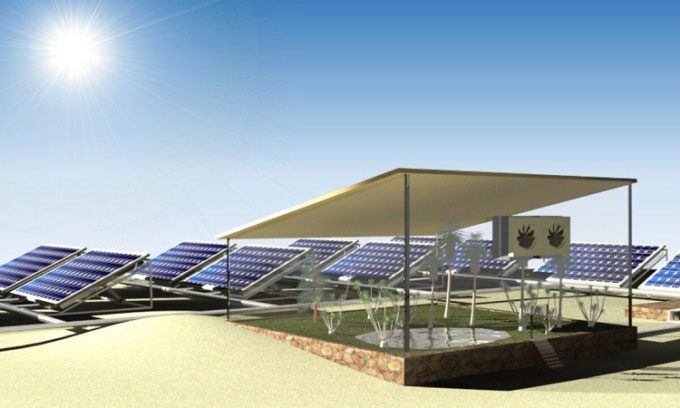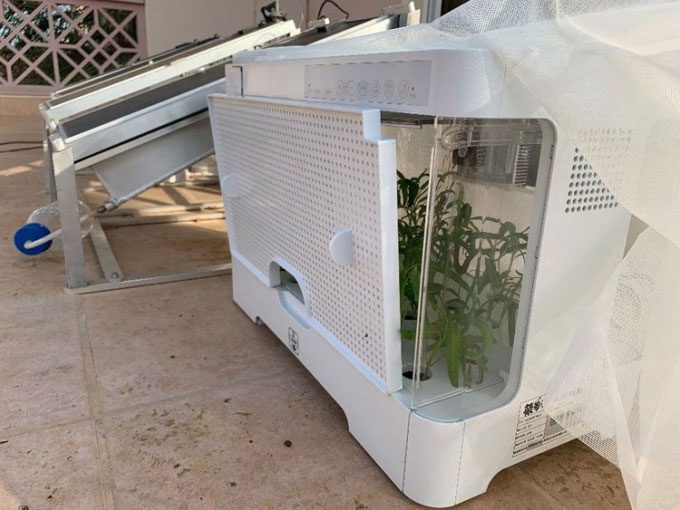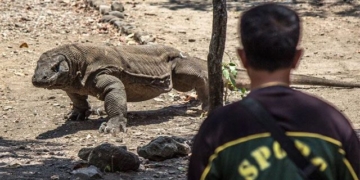The WEC2P system consists of solar panels and a layer of hydrogel that absorbs moisture from the air, allowing it to operate both day and night.

Simulation of a large-scale solar power and water production system in the desert. (Photo: Renyuan Li)
In remote desert areas, electricity and water sources for agriculture are often scarce. A team of scientists at King Abdullah University of Science and Technology (KAUST) in Saudi Arabia has developed a new system to address both issues by integrating solar panels with an absorbing hydrogel layer, named the Water-Electricity-Crop Production Integrated System, or WEC2P. The new research was published in the journal Cell Reports Physical Science on March 1.
The WEC2P consists of a series of interconnected solar panels, each placed on top of a layer of hydrogel. The panels and hydrogel form the lid of a sloped metal box, with a water tap at the bottom. At night, the box remains open, allowing the hydrogel to absorb moisture from the air. During the day, the box closes. The solar panels generate electricity when sunlight shines on them, which also heats both the solar panels and the hydrogel layer underneath.
As a result, the water previously absorbed evaporates from the hydrogel and condenses on the back of the solar panels. When the liquid water flows off the panels, it carries away excess heat, providing a cooling effect that enhances the solar panels’ efficiency by up to 9%. The water then flows down to the bottom of the metal box and out to the tap. From there, users can collect the water for irrigation or drinking.

The experimental system consists of two solar panels and a planting box. (Photo: Renyuan Li)
The experts conducted small-scale tests with the WEC2P in the deserts of Saudi Arabia for about two weeks in June last year. With solar panels and a hydrogel layer the size of a desk, the experimental system produced a total of 1,519 Wh of electricity and approximately 2 liters of water. This water was used to irrigate 60 spinach seeds planted in a plastic box. Of these, 57 seeds germinated and grew to a height of 18 cm.
“Ensuring that everyone on Earth has access to clean water and clean energy at an affordable price is part of the Sustainable Development Goals (SDGs) set by the United Nations. I hope this new design can become a decentralized water and electricity production system to light homes and irrigate crops,” said Professor Peng Wang, a member of the research team.



















































